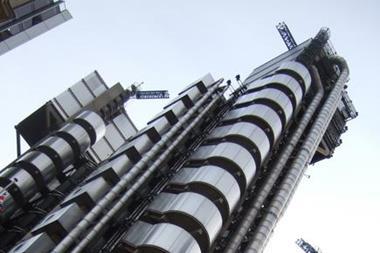Following the consolidator’s sharp deterioration in profitability, we invite an analyst to look at the factors that will determine Giles’s success
Since the Charterhouse Capital Partners-backed management buyout in 2008, Giles has been highly acquisitive, seeking to develop swiftly from a mid-sized broker (31 branches in 2008) into an industry leader.
By the end of 2010, Giles had spent over £160m on buying up smaller broking firms and several millions pounds more integrating them into the enlarging group. Naturally this comes with a cost, and the parent company – through which Charterhouse controls the group – had net debt of £257m in its latest accounts and reported negative net assets under IFRS. One must point out that Giles itself has significantly positive net assets even if one ignores goodwill.
Key observations
- Giles’s strategy should succeed if the business, and particularly the skilled personnel, are well managed.
- There are three main advantages to be gained: economies of scale in the back office; cross-selling opportunities for subsidiaries with different niche skills and markets; and a stronger negotiating position with insurers, bankers, advertising channels and so on.
- The losses reported at group level (Giles made £0.9m before interest) for 2009/10 are partly cyclical, owing to the downturn in the insurance premium cycle (except in UK motor insurance) and partly because of the group’s expansion programme (amortisation of goodwill and integration costs).
- Observers have two major concerns: the impact of a return to normal (in excess of inflation) interest rates on a group with such a high level of debt relative to turnover and operating profits; and the risk of losing key staff.
- The group is dependent on capital backing from Charterhouse but, unless the group implodes, it remains very much in the investor’s interest to maintain and, if necessary, increase that support.
Looking back
In 2008 Charterhouse said that the deal provided Giles with £500m of funding to acquire smaller commercial brokers and it has “only” spent £168m so far, so we should expect it to continue on the acquisition trail. A look at its website indicates a relatively heavy concentration of branches in Scotland (12 out of 39) and relatively small involvement in Lloyd’s.
Starting off with the bad news: turnover actually declined on 2009/10 from the previous year, despite the benefit of acquisitions. Most, if not all, of this was because of the decline in premium rates following a couple of years when insurers did not suffer heavy losses from US hurricanes. However, it is disappointing, as the spread of different specialities was expected to both temper the impact of cyclical downturns and to generate cross-selling opportunities.
Consequently, group operating profit (before amortisation of goodwill) declined modestly, despite savings on administration costs (the reported rise of 2% was less than the effect of acquisitions during the two years).
Operating profit (before goodwill) of 24% (down from 27%) should still be envied by the insurers who underwrite the risks that Giles supplies to them.
The plunge into loss under IFRS was largely down to a change in accounting policy on goodwill, amortising it over 12 years instead of 20, and a consequential write-down in intangible assets. Stripping this out would give a much prettier and more accurate picture of performance (although I should prefer the 12-year write-down period, as the one-off write-down distorts the profit and loss account).
The good news for clients and insurers is that Giles has progressively improved its performance on paying bills. This may help it to achieve its aim of growing the business, as people prefer and find it easier to deal with counterparties who pay correctly on time without the need for reminders and hassle.
Looking forward
As the demands for higher rates from Munich Re and its competitors feed through to direct insurance premiums, revenue and profits for Giles should recover, with significant gearing to profits, as there are negligible increase to costs for brokers arising from higher premium rates. These are almost (sometimes more than totally) offset by the gains in interest receipts from the cash held by brokers until remitted to insurers.
The trebling of turnover since 2007, combined with the modest growth in branches from 31 to 40 since the MBO, and the consequent less-than-trebling of employee numbers, should improve margins over the cycle. The group still has a lot to do in order to achieve national coverage (it has no branch in the East Midlands, one in Yorkshire and one in Lancashire), so I expect to see many more acquisitions, even though they will lead to reported losses from integration costs/redundancies and goodwill amortisation. The other significant gaps are the relatively small involvement in Lloyd’s and reinsurance.
Despite the slight nervousness that always accompanies watching rapid acquisition programmes in a people business, where the key assets can be run over by a bus, I expect Charterhouse to succeed in its ambition of building a broker commissioning £1bn of gross written premium.
John Borgars is an award-winning analyst with independent research firm Equity Development.
Hosted by comedian and actor Tom Allen, 34 Gold, 23 Silver and 22 Bronze awards were handed out across an amazing 34 categories recognising brilliance and innovation right across the breadth of UK general insurance.













































No comments yet